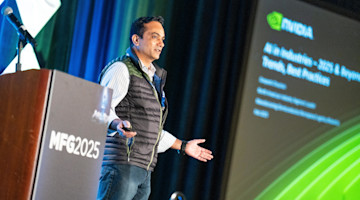Last fall, the U.S. Environmental Protection Agency (EPA) issued two rules relating to toxic substances that significantly impact manufacturers and suppliers.
PIP (3:1)
On Nov. 24, 2023, the EPA published a proposed rule that would amend the 2021 regulations to ban phenol, isopropylated phosphate (3:1) (PIP (3:1)) under the Toxic Substances Control Act (TSCA). The proposed revisions to the 2021 rule result from comments the agency received regarding the impossibly short implementation and transition requirements that caused an uproar in the manufacturing community.
Although there is no PIP (3:1) chemical manufacturing in the United States, it is widely used in manufacturing. It is found in electronics components, robotics and manufacturing equipment, gaskets, clamps, tubes, harnesses, cables, casings, and many flame-retardant applications. The ban represents a big burden on U.S. manufacturers, as they must scrutinize every component of their supply chains for PIP (3:1), rework manufacturing processes, and find new materials.
The 2023 proposed rule represents some progress by extending compliance requirements to 10 years for manufacturing equipment and the semiconductor industry. However, there are still significant challenges. In the 2024 public comments to the EPA (Page 2), AMT – The Association For Manufacturing Technology outlined the issues remaining with the rule in maintenance operations, start date, changes to previous exemptions, and compliance. AMT also submitted comments in 2021.
PFAS
The EPA finalized expansive reporting and recordkeeping requirements for Per- and Polyfluoroalkyl Substances (PFAS) under the Toxic Substances Control Act (TSCA). The final rule, effective November 2023, requires manufacturers that produce, use, or import PFAS to report extensive information on the chemicals going back to 2011. Companies have until May 2025 to report over a decade of data. Small businesses get an extra six months.
PFAS reporting must include the following:
The chemical's scientific and commercial name
Identification number
Molecular structure
Import production volume
Industrial processing and usage
Consumer and commercial use
Worker exposure data
Test methods used to detect PFAS
The use of PFAS is widespread across manufacturing sectors, including consumer products such as cookware, personal care, textiles, and numerous industrial applications. Examples of where PFAS can be found include cleaners, textiles, leather, paper and paints, firefighting foams, and wire insulation.
The enhanced reporting aims to help the EPA research, monitor, and regulate PFAS, but it comes at a steep cost to businesses. When the EPA proposed the reporting requirements in 2021, the economic impact of gathering the information needed for compliance was estimated by the EPA to cost over 129,000 hours or $10.8 million. In the 2023 final rule, the estimate to comply increased to about 11.6 million hours, or more than $800 million.
There are also initiatives in dozens of states that ban or restrict the use of PFAS. AMT strongly recommends engaging with your supply chain to help identify parts or materials containing PFAS and PIP (3:1). Document everything – your due diligence, data, and decision-making process – to demonstrate your company's commitment to compliance efforts.






